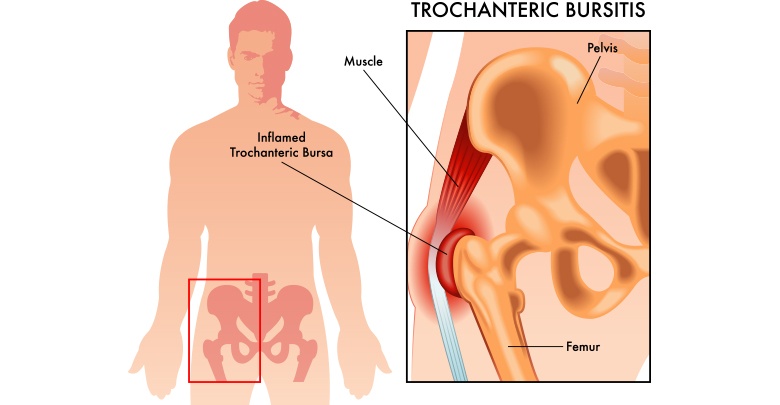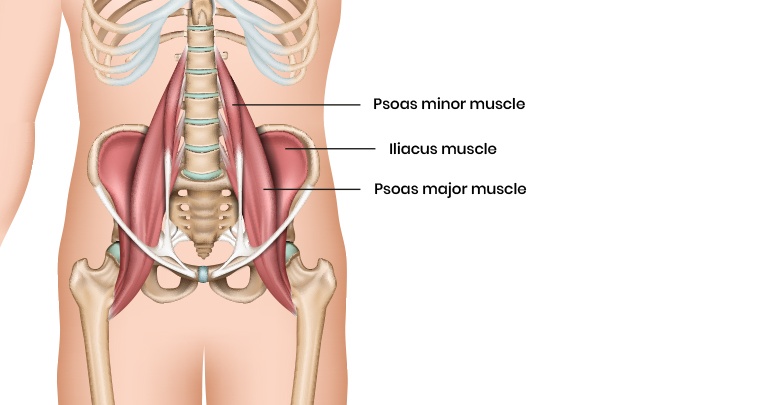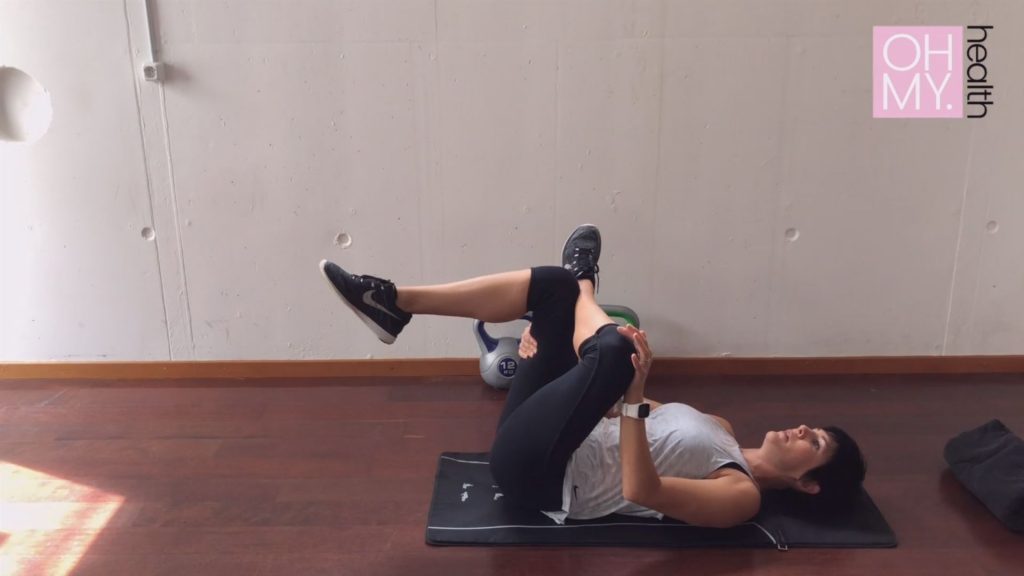Bursitis of the hip – which type do you have?
The two most common forms of bursitis of the hip, easily explained

The two most common forms of bursitis of the hip, easily explained
What is bursitis?
A bursa is a small fluid filled, jelly like sac, which lies between a bone and a tendon. Bursae are found all over the body. Their function is to enable tendons to glide smoothly over the bone or joint. Sometimes however, the bursa may become swollen, inflamed and painful. You can read about the causes of hip bursitis here.
USE the OMH exclusive code "HEALTH15" to Save 15%Around the hip joint there are actually four bursae, which can possibly become inflamed and painful. The most commonly affected bursae are the trochanteric bursae and the iliopsoas bursae, which we will explain in more detail.
Trochanteric bursitis of the hip

Trochanteric bursitis of the hip is inflammation of the bursa, which lies between the greater trochanter (the greater trochanter is the outer most point of the femur, or thigh bone) and the tendons of the tensor fascia latae muscle, gluteus medius and gluteus minimus muscles.
Symptoms of trochanteric bursitis of the hip
Trochanteric bursitis typically presents with the following symptoms:
- pain on the outer side of the buttock/hip area – the pain may initially be sharp and easy to pinpoint. If the bursitis becomes more chronic, the pain may become more widespread. The pain may then radiate into the buttock, or even down the outside of the leg
- tenderness to touch or pressure – the area surrounding the bursa becomes very sensitive to touch. When examining you the therapist or doctor would apply pressure to the area of the bursa and it would be very painful and tender
- pain with walking or repetitive activities – climbing stairs, running or even just walking may cause irritation of the swollen bursa
- pain with lying down – lying for long periods of time on the irritated bursa causes pain due to pressure on the bursa. Lying on the other side causes pain because of the hip being slightly across the midline of the body, thus also creating pressure because the tendons are stretched over the swollen bursa.
- pain with getting in and out of the car – the sideways movement of your hip to manoeuvre yourself into or out of your car, may cause pain
- pain with crossing your legs – this movement places excessive stretch over the bursa, thereby possibly causing pain
- pain at night – this is because bursitis is an inflammatory condition. Inflammatory pain is worse at night due to the natural decrease in the body’s cortisol levels.
Iliopsaos bursitis of the hip
Iliopsoas bursitis of the hip is the other common form of hip bursitis. It is also sometimes called the iliopectineal bursa. It is a large bursa, which lies between the hip joint capsule and the hip flexor muscle. This bursa lies more in the front of the hip.

The symptoms of iliopsoas bursitis are
- pain in front of the hip and groin pain – the pain may initially be sharp and easy to pinpoint. If the bursitis becomes more chronic, the pain may become more widespread. The pain may then radiate down the front of the thigh, or even up into the lower back
- tenderness to touch or pressure – the area surrounding the bursa becomes very sensitive to touch. When examining you the therapist or doctor would apply pressure to the area of the bursa and it would be very painful and tender
- pain with walking or repetitive activities – climbing stairs, running, repetitive hip bending or even just walking can cause irritation of the swollen bursa
- pain with sustained positions such as sitting – sitting for long periods of time causes compression on the bursa, making it painful when you try to stand up again
- pain at night – this is because it is an inflammatory condition. Inflammatory pain is worse at night due to the natural decrease in the body’s cortisol levels.
Read more about bursitis of the hip
OhMy.Health has a wealth of articles about the causes of hip bursitis, the treatment options, and physio approved bursitis exercises which you can do at home – demonstrated in this video. There are also free downloadable exercises and stretches you can do daily.

References
- Nurkovic J, Jovasevic L, Konicanin A, Bajin Z, Ilic KP, Grbovic V, Skevin AJ, Dolicanin Z.Treatment of trochanteric bursitis: our experience. J Phys Ther Sci. 2016 Jul;28(7):2078-81. doi: 10.1589/jpts.28.2078. Epub 2016 Jul 29. PubMed PMID: 27512268; PubMed Central PMCID: PMC4968510.
- Frank H. Netter, Atlas of Human Anatomy, International Edition, Elsevier Health Sciences, London
- Neuromusculoskeletal Examination and Assessment, 4th Edition, Churchill Livingstone, 2011
- Reid D. The management of greater trochanteric pain syndrome: A systematic literature review. J Orthop. 2016 Mar;13(1):15-28. doi: 10.1016/j.jor.2015.12.006. eCollection 2016 Mar. Review. PubMed PMID: 26955229; PubMed Central PMCID: PMC4761624. selectAaron DL, Patel
- A, Kayiaros S, Calfee R. Four common types of bursitis: diagnosis and management. J Am Acad Orthop Surg. 2011 Jun;19(6):359-67. doi: 10.5435/00124635-201106000-00006. Review. PubMed PMID: 21628647.